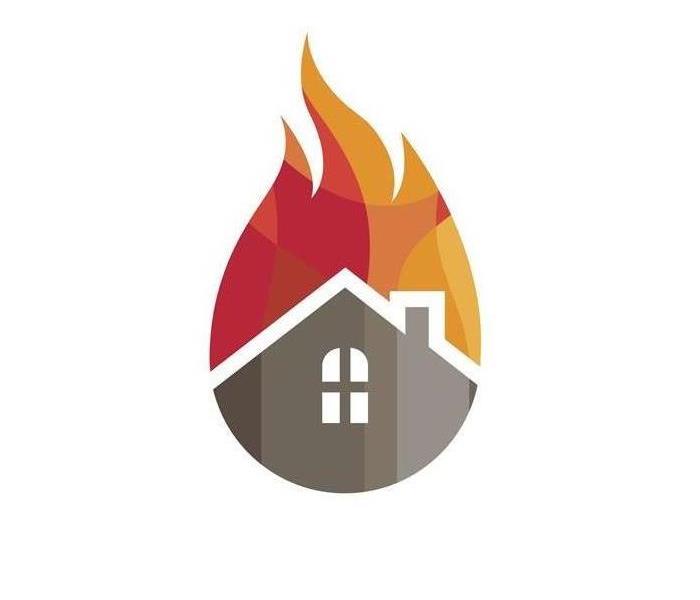How Does SERVPRO Decide What to Clean During Fire Damage Restoration?
10/2/2020 (Permalink)
Lynn Homeowners Want to Know if SERVPRO Can Save Their Belongings.
Lynn homeowners only need to take a quick look around to realize just how many possessions a home can contain. Whether you live with a family or live alone, it is effortless to accumulate furniture, clothes, knick-knacks, etc. If there is a fire in your home, your belongings provide fuel for the flames, which is a sobering thought.
Residents who need fire damage restoration in Lynn are curious about what SERVPRO can save from smoke damage, and how we decide what to clean and what to toss. Many factors affect the cleanability of an item.
What can SERVPRO clean after a fire?
Fire spreads quickly, and in a very short time, your belongings can burn. We understand how distressing it is to see your home after a blaze. Thankfully, we have the tools and cleaning products to clean most household items:
- Clothes, linens, towels, and drapes
- Wooden furniture and cabinets, textiles, and carpets or rugs
- Documents, art, photographs, and craft supplies
- Ornaments and keepsakes
It is our policy to clean items rather than replace them, if possible. Cleaning is cheaper than replacing things, it makes it easier to claim on your insurance, and it lessens the emotional impact of losing precious belongings.
We cannot save items that have suffered extensive physical damage. For example, we cannot salvage clothes that are burned beyond wearing or furniture that is warped to the point that it is unusable. These items were often close to the heart of the fire. However, as we move out from the source and into the rest of your home, we will find many not physically broken items. Instead, we start seeing things covered in smoke stains, and our technicians are highly skilled at dealing with those.
What difference does the kind of smoke make?
The kind of smoke makes a big difference to the cleanability of an item:
- Dry smoke residue is powdery and easy to clean away from surfaces
- Wet smoke residue contains more compounds such as aerosols and is stickier, which makes it harder to clean
- Fuel oil soot is generally soft, but some particles are crustier and, therefore, more challenging to clean without damaging the surface underneath
- Protein soot is harder to see but smells terrible and requires an extensive cleaning
What about the type and age of material?
Porous materials are more difficult to clean than smooth materials because soot residue can penetrate further into them. For example, it is easier to clean an enamel-painted surface than a wallpapered one because the wallpaper is more porous. Synthetic fibers are usually easier to clean than natural ones because of their smoother surface.
The age of the item also makes a difference. Older items generally have more wear and tear and are thus harder to clean. This is true for furniture, clothes, and textiles.
Are there any other factors?
Several other factors affect cleanability:
- The temperature of the fire – hotter fires cause more warping, bubbling, and cracking, which makes surfaces more porous and more likely to take on smoke residues
- The amount of moisture – fire-fighting chemicals and sprinkler systems can make residues wetter and more likely to sink into a surface and stain it
- Air pressure during the fire – as the pressure rises, the air forces soot into cracks and crevices
- Type of material burned during the fire – synthetic materials and plastics leave behind more challenging residues than natural fabrics like cotton and wood
We take all aspects into account when deciding what to clean and what to discard.
How do fire restoration technicians reach a decision?
SERVPRO of Lynn / Lynnfield technicians start at the source of the fire and work outwards, dividing materials into salvageable, non-salvageable, and undecided. We train our remediation teams to the Institute of Inspection, Cleaning and Restoration Certification (IICRC) standards, which means they are experts in assessing what to clean and what is beyond saving.
We agree on our cleaning plan with you before we commence. Then we use a combination of HEPA vacuuming, scrubbing, hydraulic cleaning, ultrasonic cleaning, spot cleaning, and fogging to cleanse and restore your furniture, textiles, and personal belongings.
We deodorize your home and contents before we leave, to get rid of lingering smoke odors.
Will SERVPRO restore items to their preloss condition?
We aim to restore items “Like it never even happened,” where possible. However, it's not always possible to restore an item to its preloss condition. Our team will inform you of the likely results before we begin cleaning, so you always know what to expect.
For help with fire restoration, call SERVPRO of Lynn / Lynnfield at (781) 593-6663.





 24/7 Emergency Service
24/7 Emergency Service
